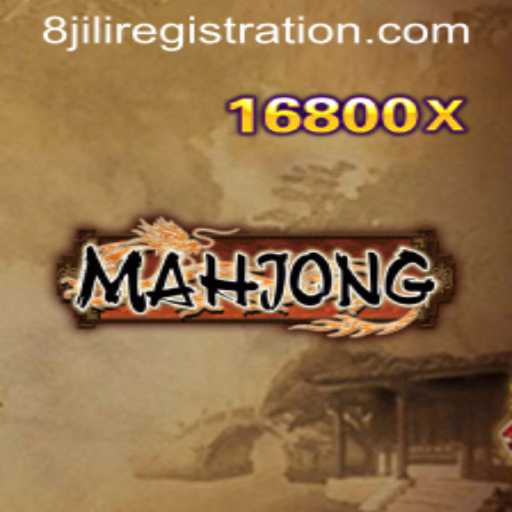A comprehensive look into the classic tile-based game of Mahjong, its rules, and the impact of 8JILI in current gaming culture.
Mahjong: A Timeless Game with Modern Twists
Mahjong, a game rich with history and cultural significance, has been captivating players for centuries. Originating from China during the Qing dynasty, this tile-based game is both a pastime and a test of strategic acumen. As the game has evolved over the years, it has managed to hold its ground amidst a rapidly changing digital era. Today, with platforms like 8JILI bringing new waves of interest and accessibility, Mahjong remains more relevant than ever.
Introduction to Mahjong
The allure of Mahjong lies in its complexity and tradition. Traditionally played by four players, Mahjong involves a set of 144 tiles based on Chinese characters and symbols. The main objective is to build complete sets or ‘melds’ through drawing and discarding tiles. Skill, calculation, and a bit of chance come together in this dynamic game, making it both engaging and intellectually stimulating.
The Essentials of Mahjong Gameplay
Each Mahjong set is comprised of three suits: dots, bamboo, and characters. Additionally, there are honor tiles, which include winds and dragons, and bonus tiles known as flowers and seasons. Understanding the makeup of these tiles is crucial for mastering the game. A typical round begins with players being dealt a hand of 13 tiles. The goal is to form four melds and one pair, equating to a ‘winning hand’ of 14 tiles. Melds can be either chow (a sequence of three consecutive numbers from the same suit), pung (a set of three identical tiles), or kong (a set of four identical tiles).
Strategic Depth and Rule Variations
While Mahjong’s core rules are consistent, regional versions introduce exciting variations that add further depth to the game. For instance, some versions emphasize scoring based on specific combinations while others might include unique bonus points. The Hong Kong style is known for its fast-paced nature, whereas the Japanese Riichi variant introduces a layer of betting, adding even more strategy to consider.
The Role of 8JILI in Mahjong’s Modern Landscape
In recent years, technological advancements have ushered in a new era for traditional games like Mahjong. Online platforms and mobile apps have drastically increased accessibility, allowing players worldwide to engage with the game. Among these platforms, 8JILI stands out, appealing to new demographics while preserving the cultural essence of Mahjong.
8JILI has been successful in integrating Mahjong into the contemporary mobile gaming sphere. Offering an interface that is both user-friendly and visually appealing, this platform caters to both seasoned players and beginners. The reach of 8JILI extends far beyond entertainment; it has sparked a renewed interest in the game among younger players, who might have found traditional formats daunting or inaccessible.
Beyond accessibility, 8JILI has innovated with the integration of leaderboards and community features, fostering a vibrant online Mahjong community. Engaging with participants through tournaments and events, the platform maintains Mahjong as a lively and competitive option for players across the globe.
The Cultural Impact of Mahjong in Today's World
Mahjong isn't just another game; its cultural significance runs deep. With its roots in ancient Chinese society, Mahjong serves as a social connector that transcends age, language, and geographical barriers. Local clubs and online communities provide venues for sharing strategies, discussing variations, and hosting friendly competitions. This communal aspect of Mahjong is what keeps the game thriving, even in today’s fast-paced digital world.
International interest in Mahjong has flourished thanks to platforms like 8JILI, which promote cultural appreciation through gaming. By offering multiple language options and user interfaces adapted for global audiences, these platforms respect the cultural origins of Mahjong while inviting a diverse array of players to experience its richness.
Current Trends and Events
The re-emergence of Mahjong has not only caught the attention of players but also the view of cultural events and competitions globally. The game is often featured in international gaming and cultural festivals, allowing it to stay under the spotlight while influencing other recreational activities. Recent developments in esports have also seen Mahjong getting more traction as it fuses traditional gameplay with competitive settings.
Furthermore, the pandemic years saw an unexpected rise in the popularity of digital games, with many turning to online platforms to continue enjoying traditional games from the comfort of their homes. Mahjong, being a game that bridges generational gaps, was naturally a favorite as it provided not only entertainment but also a means of connection for families taking part from different locations.
8JILI and similar platforms have continuously worked to create adaptive solutions, whether through improved gameplay mechanics or community-driven feedback systems, ensuring that the legacy of Mahjong remains crucial and adaptive in modern gameplay narratives.
The story of Mahjong is one of resilience, adaptability, and cross-cultural appeal. As generations continue to change, its presence both as a traditional game and modern staple in the digital age signifies an enduring richness that appeals to a truly global audience. With the help of platforms like 8JILI, Mahjong is set to continue its legacy for many years to come.




